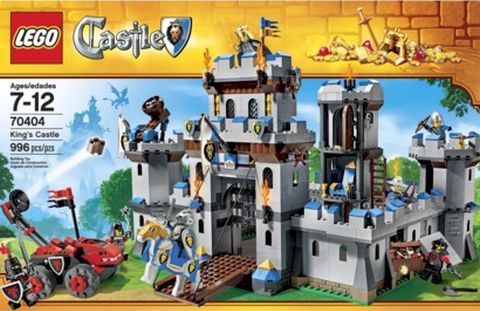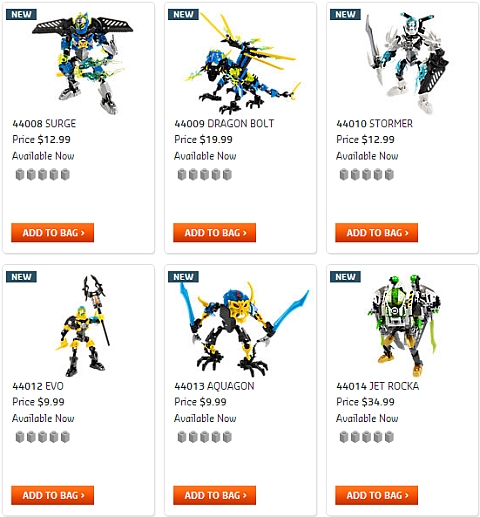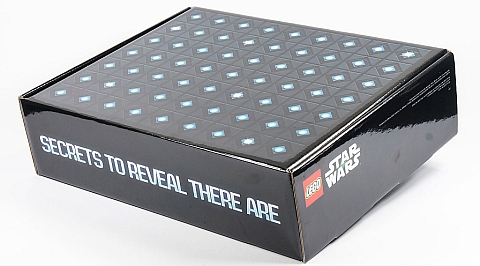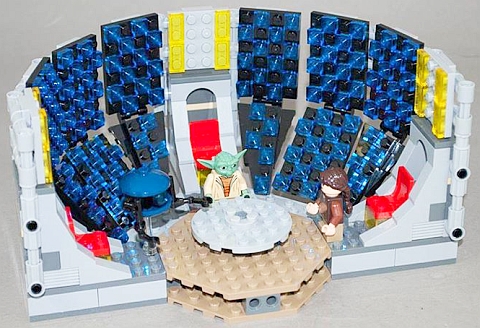Totally awesome news for your Monday morning! Most of the 2013 LEGO summer sets are now available at the Online LEGO Shop! They are a little hard to find because many of them are not properly categorised just yet, but you can see all of them at the What’s New section at the Online LEGO Shop (clicking on the link will take you there directly). And don’t forget that the free shipping deal is still going on, so the timing is just perfect! Okay, so let’s see what we got new! 🙂

➡ 2013 LEGO CASTLE SUMMER SETS: Finally LEGO Castle is back! The highly anticipated new LEGO Castle line is now available with five new sets (I’m only showing three below because of the layout, but just click on the image and it will take you to see them all). There is the #70400 LEGO Castle Forest Ambush for $11.99, the #70401 LEGO Castle Gold Getaway for $19.99, the #70402 LEGO Castle The Gatehouse Raid for $29.99, the #70403 LEGO Castle Dragon Mountain for $49.99, and the #70404 LEGO Castle King’s Castle for $99.99.
➡ 2013 LEGO GALAXY SQUAD SUMMER SETS: One of the best LEGO Space themes, Galaxy Squad is back with a second wave of sets. There were six sets in the first wave (see them here: LEGO Galaxy Squad at the Online LEGO Shop), and four sets in the second wave. Three of them are already listed and available to buy; the #70706 LEGO Galaxy Squad Crater Creeper for $19.99, the #70707 LEGO Galaxy Squad CLS-89 Eradicator Mech for $39.99, and the #70708 LEGO Galaxy Squad Hive Crawler for $69.99. The #70709 LEGO Galaxy Squad Galactic Titan is not yet listed at the time of this writing, but should be available soon. Price will be $99.99. Just check back to the What’s New Section at the Online LEGO Shop.
➡ 2013 LEGO LEGENDS OF CHIMA SUMMER SETS: The LEGO Legends of Chima summer sets mostly contain the large, buildable Chima heroes, also referred to as Constraction (Construction + Action) Figures. For other LEGO Legends of Chima sets and Speedorz check the LEGO Legends of Chima section at the Online LEGO Shop. The six large, CHI-empowered animal heroes available now are #70200 CHI Laval the Lion, #70201 CHI Eris the Eagle, #70202 CHI Gorzan the Gorilla, #70203 CHI Cragger the Crocodile, #70204 CHI Worriz the Wolf, and #70205 CHI Razar the Raven. All of them are $14.99 each.
➡ 2013 LEGO CREATOR SUMMER SETS: There are three summer sets in the LEGO Creator theme. The beauty of LEGO Creator sets is that instructions for several alternate models are included. In this case, each of the following sets can be built in three different ways! (For other sets check out the LEGO Creator section at the Online LEGO Shop.) The LEGO Creator summer sets are the #31010 LEGO Creator Treehouse for $29.99 (really sweet set!), the #31011 LEGO Creator Aviation Adventures for $59.99, and the # 31012 LEGO Creator Family House for $69.99 (comes with light-brick for a cozy home feel!).
➡ 2013 LEGO CITY SUMMER SETS: The theme for LEGO City this summer is quite appropriately Coast Guard with a really nice color-scheme and a good variety of sets. (For other sets check out the LEGO City section at the Online LEGO Shop.) There is the #60012 LEGO City 4×4 Diving Boat for $19.99, the #60013 LEGO City Coast Guard Helicopter for $39.99, and the #60014 LEGO City Coast Guard Patrol for $79.99.
➡ 2013 LEGO HERO FACTORY SUMMER SETS: Hero Factory has some really interesting sets this summer I’m planning to review separately in the near future. There are seven new sets this summer (I’m only showing six below because of the layout, but just click on the image and it will take you to see them all). The sets are #44008 LEGO Hero Factory Surge for $12.99, #44009 LEGO Hero Factory Dragon Bolt for $19.99, #44010 LEGO Hero Factory Stormer for $12.99, #44011 LEGO Hero Factory Frost Beast for $12.99, #44012 LEGO Hero Factory Evo for $9.99, #44013 LEGO Hero Factory Aquagon for $9.99, and #44014 LEGO Hero Factory Jet Rocka for $34.99. This last one is one of the largest LEGO Hero Factory sets, and it is quite interesting. (For other sets check out the LEGO Hero Factory section at the Online LEGO Shop.)
➡ 2013 LEGO LORD OF THE RINGS SUMMER SETS: the LEGO Lord of the Rings summer sets were not yet listed at the time of this writing, so just continue checking the What’s New section at the Online LEGO Shop. (For currently available sets check the LEGO Lord of the Rings section and the LEGO The Hobbit sections at the Online LEGO Shop.) Of course the set we are all waiting for is the #10237 LEGO Lord of the Rings Tower of Orthanc that is already listed, but won’t be available for purchase until the 1st of July. But at least you can check out the pictures and all. 🙄
Also, remember that free shipping over $75 is valid until the 15th of June. So what do you think? Are you excited about the 2013 LEGO summer sets? Which one(s) are you planning to pick up? Feel free to share your thoughts and discuss in the comment section below! 😉
And you might also like to check out the following related posts:




















